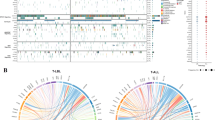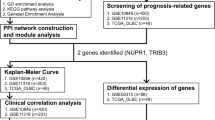Abstract
Recent progress in sequencing the human Y chromosome has unveiled a series of X-Y homologous genes. In the present study, we focused on Transducin beta-like 1Y (TBL1Y), which is a Y-linked homologue of TBL1X that is related with X-linked late-onset sensorineural deafness. Recently, it has been shown that TBLR1, another homologue whose gene resides on chromosome 3, and TBL1X act as a corepressor/coactivator exchanger for several nuclear receptors and transcription factors. However, the expression pattern and function of TBL1Y remain unknown. The RT-PCR analysis of the TBL1 family revealed that TBL1Y was expressed in all 13 tissues examined but not in leukocytes. Among the cell lines tested, however, it was only expressed in NT2/D1 cells and in lymphoblasts transformed with Epstein Barr (EB) virus. To compare the functions of the TBL1 family, we generated a series of expression plasmids for GAL4DBD-fused proteins of the TBL1 family. We carried out dual luciferase assays using these plasmids in combination with a plasmid having a luciferase reporter gene harboring 5×GAL4 binding sites. Unlike the other constructs, GAL4DBD-fused TBL1Y did not repress the promoter activity. Moreover, we found three novel polymorphisms in the TBL1Y gene, IVS7+9G>A, G268C, and IVS7+1G>C, which is presumed to cause splicing error. These polymorphisms are found in males within Y-haplogroup O3 (XO3e), which is defined as the Y-haplogroup O3 excluding O3e, a branch of O3. The results show that TBL1Y differs from other members of the TBL1 family in expression and function, suggesting other roles in maleness.
Similar content being viewed by others
Log in or create a free account to read this content
Gain free access to this article, as well as selected content from this journal and more on nature.com
or
References
Bassi MT, Ramesar RS, Caciotti B, Winship IM, De Grandi A, Riboni M, Townes PL, Beighton P, Ballabio A, Borsani G (1999) X-linked late-onset sensorineural deafness caused by a deletion involving OA1 and a novel gene containing WD-40 repeats. Am J Hum Genet 64:1604–1616
Blanco P, Shlumukova M, Sargent CA, Jobling MA, Affara N, Hurles ME (2000) Divergent outcomes of intrachromosomal recombination on the human Y chromosome: male infertility and recurrent polymorphism. J Med Genet 37:752–758
Dong X, Tsuda L, Zavitz KH, Lin M, Li S, Carthew RW, Zipursky SL (1999) Ebi regulates epidermal growth factor receptor signaling pathways in Drosophila. Genes Dev 13:954–965
Fisher EM, Beer-Romero P, Brown LG, Ridley A, McNeil JA, Lawrence JB, Willard HF, Bieber FR, Page DC (1990) Homologous ribosomal protein genes on the human X and Y chromosomes: escape from X inactivation and possible implications for Turner syndrome. Cell 63:1205–1218
Guenther MG, Lane WS, Fischle W, Verdin E, Lazar MA, Shiekhattar R (2000) A core SMRT corepressor complex containing HDAC3 and TBL1, a WD40-repeat protein linked to deafness. Genes Dev 14:1048–1057
Hammer MF, Horai S (1995) Y chromosomal DNA variation and the peopling of Japan. Am J Hum Genet 56:951–962
Lahn BT, Page DC (1997) Functional coherence of the human Y chromosome. Science 278:675–680
Li J, Wang J, Wang J, Nawaz Z, Liu JM, Qin J, Wong J (2000) Both corepressor proteins SMRT and N-CoR exist in large protein complexes containing HDAC3. EMBO J 19:4342–4350
Nakahori Y, Takenaka O, Nakagome Y (1991) A human X-Y homologous region encodes “amelogenin”. Genomics 9:264–269
Neer EJ, Schmidt CJ, Nambudripad R, Smith TF (1994) The ancient regulatory-protein family of WD-repeat proteins. Nature 371:297–300
Ohno S (1967) Sex chromosomes and sex-linked genes. Springer, Berlin
Page DC, Mosher R, Simpson EM, Fisher EM, Mardon G, Pollack J, McGillivray B, de la Chapelle A, Brown LG (1987) The sex-determining region of the human Y chromosome encodes a finger protein. Cell 51:1091–1104
Perissi V, Aggarwal A, Glass CK, Rose DW, Rosenfeld MG (2004) A corepressor/coactivator exchange complex required for transcriptional activation by nuclear receptors and other regulated transcription factors. Cell 116:511–526
Santos FR, Pandya A, Tyler-Smith C (1998) Reliability of DNA-based sex tests. Nat Genet 18:103
Sekiguchi T, Iida H, Fukumura J, Nishimoto T (2004) Human DDX3Y, the Y-encoded isoform of RNA helicase DDX3, rescues a hamster temperature-sensitive ET24 mutant cell line with a DDX3X mutation. Exp Cell Res 300:213–222
Shinka T, Tomita K, Toda T, Kotliarova SE, Lee J, Kuroki Y, Jin DK, Tokunaga K, Nakamura H, Nakahori Y (1999) Genetic variations on the Y chromosome in the Japanese population and implications for modern human Y chromosome lineage. J Hum Genet 44:240–245
Shinka T, Naroda T, Tamura T, Sasahara K, Nakahori Y (2001) A rapid and simple method for sex identification by heteroduplex analysis, using denaturing high-performance liquid chromatography (DHPLC). J Hum Genet 46:263–266
Skaletsky H, Kuroda-Kawaguchi T, Minx PJ, Cordum HS, Hillier L, Brown LG, Repping S, Pyntikova T, Ali J, Bieri T, Chinwalla A, Delehaunty A, Delehaunty K, Du H, Fewell G, Fulton L, Fulton R, Graves T, Hou SF, Latrielle P, Leonard S, Mardis E, Maupin R, McPherson J, Miner T, Nash W, Nguyen C, Ozersky P, Pepin K, Rock S, Rohlfing T, Scott K, Schultz B, Strong C, Tin-Wollam A, Yang SP, Waterston RH, Wilson RK, Rozen S, Page DC (2003) The male-specific region of the human Y chromosome is a mosaic of discrete sequence classes. Nature 423:825–837
Tajima A, Pan IH, Fucharoen G, Fucharoen S, Matsuo M, Tokunaga K, Juji T, Hayami M, Omoto K, Horai S (2002) Three major lineages of Asian Y chromosomes: implications for the peopling of east and southeast Asia. Hum Genet 110:80–88
Thornton C, Tang KC, Phamluong K, Luong K, Vagts A, Nikanjam D, Yaka R, Ron D (2004) Spatial and temporal regulation of RACK1 function and N-methyl-D-aspartate receptor activity through WD40 motif-mediated dimerization. J Biol Chem 2004 279:31357–31364
Watanabe M, Zinn AR, Page DC, Nishimoto T (1993) Functional equivalence of human X-and Y-encoded isoforms of ribosomal protein S4 consistent with a role in Turner syndrome. Nat Genet 4:268–271
Y Chromosome Consortium (2002) A nomenclature system for the tree of human Y-chromosomal binary haplogroups. Genome Res 12:339–348
Yoon HG, Chan DW, Huang ZQ, Li J, Fondell JD, Qin J, Wong J (2003) Purification and functional characterization of the human N-CoR complex: the roles of HDAC3, TBL1 and TBLR1. EMBO J 22:1336–1346
Zhang J, Kalkum M, Chait BT, Roeder RG (2002) The N-CoR-HDAC3 nuclear receptor corepressor complex inhibits the JNK pathway through the integral subunit GPS2. Mol Cell 9:611–623
Acknowledgements
We are grateful to Miss Yoshida, The University of Tokushima, for technical assistance. Our study was supported in part by grants from the Core Research for Evolutional Science and Technology (CREST), 21st Century Center of Excellence (COE) Program and Ministry of Health, and Ministry of Health, Labour and Welfare.
Author information
Authors and Affiliations
Corresponding author
Rights and permissions
About this article
Cite this article
Yan, HT., Shinka, T., Kinoshita, K. et al. Molecular analysis of TBL1Y, a Y-linked homologue of TBL1X related with X-linked late-onset sensorineural deafness. J Hum Genet 50, 175–181 (2005). https://doi.org/10.1007/s10038-005-0237-9
Received:
Accepted:
Published:
Issue date:
DOI: https://doi.org/10.1007/s10038-005-0237-9
Keywords
This article is cited by
-
TBL1Y: a new gene involved in syndromic hearing loss
European Journal of Human Genetics (2019)
-
Structural basis for the assembly of the SMRT/NCoR core transcriptional repression machinery
Nature Structural & Molecular Biology (2011)



